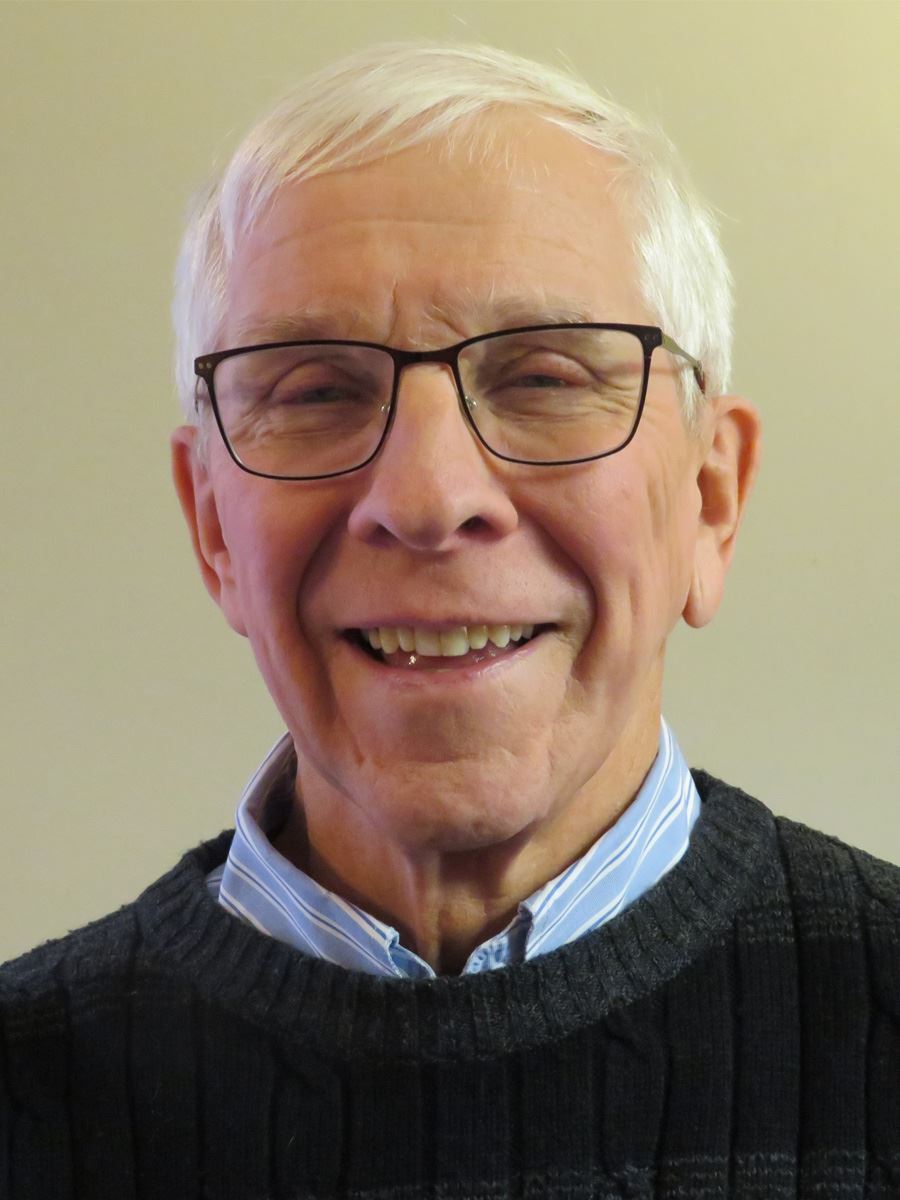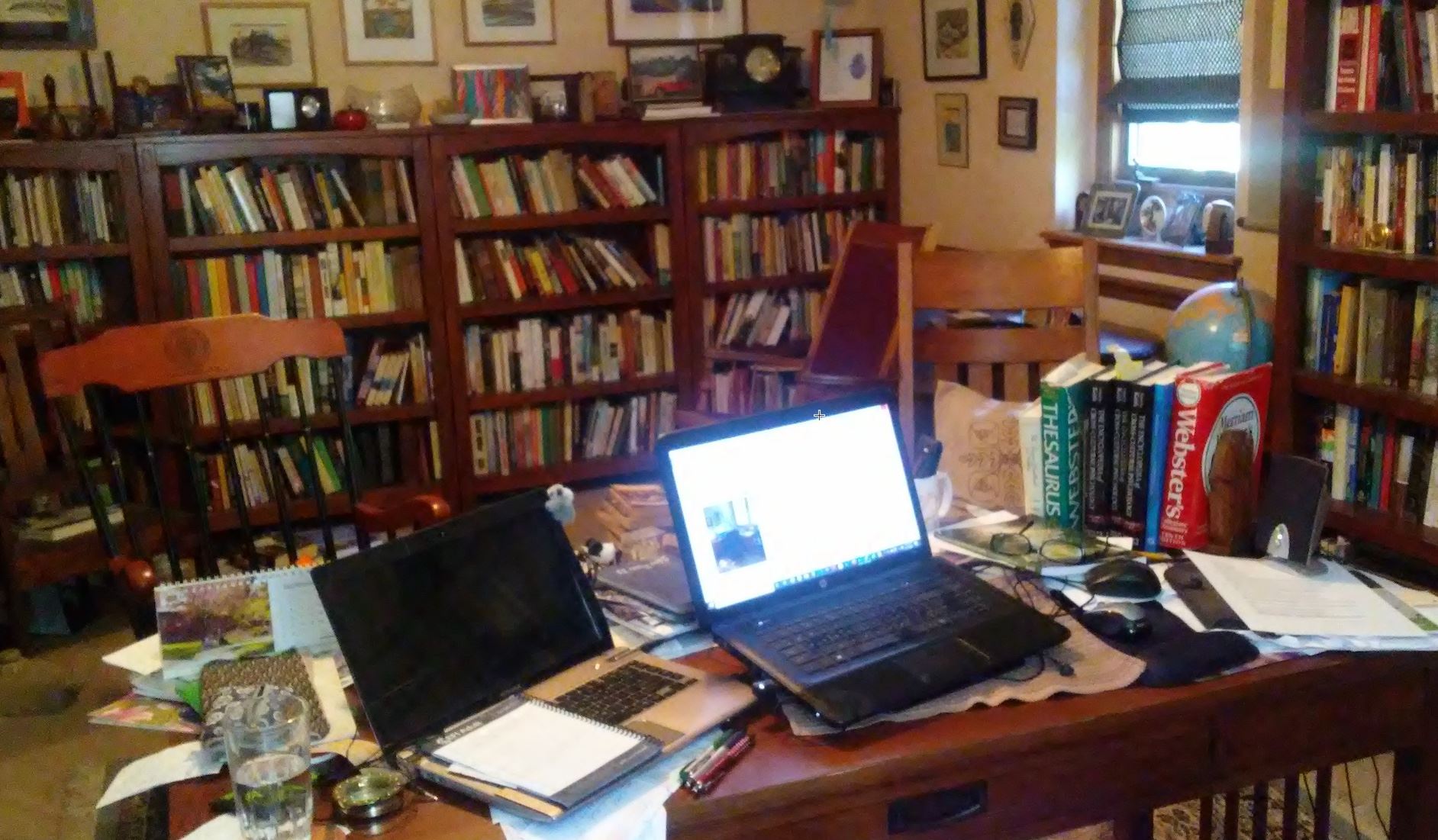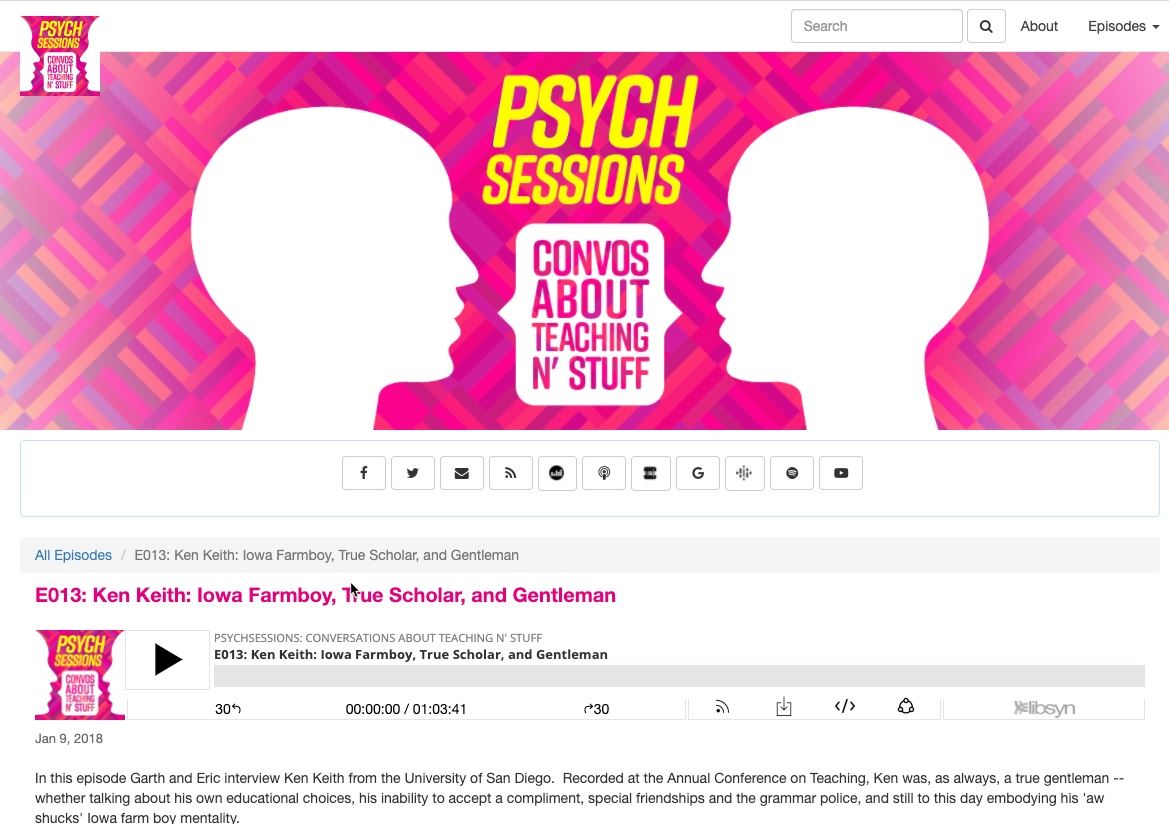PSYCHSESSIONS UPDATE:  When I received the invitation to contribute to this series, my initial reaction was to say that I’m a has-been who may have little to say to my younger colleagues—colleagues who are much more conversant than I with current technology, who represent the future of the discipline, and who are exploring unknown terrain as they adapt to teaching in the face of a worldwide pandemic. However, my friend Rob McEntarffer did some gentle arm-twisting, suggested the title you see above, and posed some questions. So here we go.
When I received the invitation to contribute to this series, my initial reaction was to say that I’m a has-been who may have little to say to my younger colleagues—colleagues who are much more conversant than I with current technology, who represent the future of the discipline, and who are exploring unknown terrain as they adapt to teaching in the face of a worldwide pandemic. However, my friend Rob McEntarffer did some gentle arm-twisting, suggested the title you see above, and posed some questions. So here we go.
School name:University of San Diego
Type of school:USD is a private university, with a Carnegie classification of “Doctoral University: High Research Activity.” However, the heart and soul of the university is the College of Arts and Sciences—a primarily undergraduate college that places a premium on quality teaching. My home was in the Department of Psychological Sciences in the College.
School locale: San Diego, CA. USD is located in the diverse, multicultural neighborhood of Linda Vista.
Classes you taught: Introductory Psychology, Research Methods, Cross-Cultural Psychology, Cross-Cultural Psychology Lab, History of Psychology
Average class size: Class sizes varied over many years, but were rarely smaller than 10 students and rarely larger than about 40.
What’s the best advice about teaching you’ve ever received? Like anyone who has spent a significant amount of time in the profession, I’ve read, heard, and sought advice of many types from many quarters. But perhaps the best advice I received over the years did not relate directly to the “how to” aspects of teaching; it was, rather, advice about the attitude, the general approach one might take to all dealings with students: Respect the audience and the occasion. This advice came from my long-time friend and colleague, the late Clifford Fawl of Nebraska Wesleyan University. Every class, Cliff believed, was an important occasion, an occasion and an audience that should be approached with respect.
What book or article has shaped your work as a psychology teacher? It would be really tough to identify a single title. An early influence was B. F. Skinner’s 1956 American Psychologist article, “A Case History in Scientific Method.” In it, Skinner discussed his approach to science, and I was powerfully influenced, but it was his opening line that really caught my eye: “It has been said that college teaching is the only profession for which there is no professional training . . . (p.221).” I have also tried over many years to integrate psychological science with the sciences more broadly, and with the liberal arts and sciences in the widest sense. Some key books along these lines have included Jacob Bronowski’s (1973) The Ascent of Man, Carl Sagan’s (1996) The Demon-Haunted World, and James Watson’s (1968) The Double Helix. I guess I have always been attracted to the stories of science and the lessons of stories, as evidenced by Robert Coles (1989) in his The Call of Stories. Finally, I have been able to pretty well follow Skinner’s (1970, p. 17) sentiment, one I quoted in the introduction to my dissertation: “I have built apparatuses as I have painted pictures or modeled figures in clay. I have conducted experiments as I have played the piano. I have written scientific papers and books as I have written stories and poems.”
Briefly tell us about your favorite lecture topic or course to teach. This is another question that doesn’t have a single simple answer. In recent years, cross-cultural psychology has been my passion, but I have loved introductory psychology since the first time I taught it in the 1967-68 academic year. In fact, I’ve never taught a course that didn’t feel like my favorite at the time. If I must choose one, I’d say introductory psychology, for two key reasons: first, intro. requires the instructor to know at least a little about nearly every facet of the field, and I’ve always found that both rewarding and challenging; second, intro. is the first (and sometimes the only) exposure that students have to our field, making it a critical course—if we do it well, the student will be hooked for life.
Briefly describe a favorite assignment or in-class activity. Although I’ve used many, perhaps hundreds, of teaching activities and assignments, one stands out as a favorite. For many years I asked my introductory psychology students to write letters home (e.g., Keith, 1999). I generally required four letters, spaced across the semester, explaining or discussing, in ordinary English, some aspect of the course. Students wrote the letters to anyone of their choosing, with the intent to share their experience in psychology with a parent, sibling, high school teacher, or friend. I provided some general guidelines, and students submitted two copies of each letter—I mailed one to the recipient, and retained one for grading and feedback purposes. This was a popular activity that helped students to clarify their own understanding, in order to explain it to someone else. As we moved further into the electronic age, some students thought the assignment was a bit quaint, but they received a lot of reinforcement from family and friends who were delighted to receive real letters from the students.
What teaching and learning techniques worked best for you? Early on, my training as a behaviorist convinced me that the most effective learning comes from doing. As a result, I became a firm believer in the importance of active engagement of students. I tried, then, to get students out of their seats whenever possible, and to engage them in demonstrations, a variety of activities, or in data collection and analysis. I wouldn’t say I was ever powerfully enamored with any particular technique, except to the extent that it could accommodate meaningful student activity. I also agree with my old friend Ludy Benjamin (2002), who argued that there are key aspects of teaching techniques, including lecturing, that determine their effectiveness. Among these are passion, clarity of goals, spontaneity, being oneself, and avoiding doing the same thing all the time.
 What’s your work space like? I can imagine that a first-time visitor to my office would immediately bring to mind a predictable word: cluttered. But I have close at hand my books, my computers, and music when I want it. My space is quiet, although not as well organized as it probably should be. But it works for me, and I like it.
What’s your work space like? I can imagine that a first-time visitor to my office would immediately bring to mind a predictable word: cluttered. But I have close at hand my books, my computers, and music when I want it. My space is quiet, although not as well organized as it probably should be. But it works for me, and I like it.
Three words that best describe your teaching style. Flexible, interactive, respectful.
What is your teaching philosophy in 8 words or fewer? Respect the audience: Students are colleagues in learning.
Tell us about a teaching disaster (or embarrassment) you’ve had and how you dealt with the situation. Many years ago I received an invitation to give a talk to a large audience on another campus. This was in the pre-PowerPoint era, so I had brought my trusty slide carousel. After the introductions, I began. Soon the carousel stuck and would not advance. It was far out in the center of a large room, and I saw no graceful way to try to fix it under the circumstances, so I simply mentioned that the slides seemed to be stuck, and I’d just go on without them. Then I was interrupted by a voice from the back, a woman saying loudly, “No, you won’t.” She got out of her seat, removing a pin from her hair, and proceeding to the projector. After a minute or so of poking and prying at the offending slide, she looked up at me and said “Now try it.” I did, and of course it worked. She had fixed the problem, and the only casualty was my pride; she exposed my technologic ineptitude, which was already pretty well known among my colleagues.
What is something your students would be surprised to learn about you? Although many of my students over the years have known that I appreciate a variety of kinds of literature, I don’t think many knew that I write poetry.
What are you currently reading for pleasure? I like to read both fiction and nonfiction. I recently finished Michael Lewis’s (2017) The Undoing Project, about the relationship and collaboration of Danny Kahneman and Amos Tversky. I also recently read Alan Furst’s (2019) Under Occupation, a novel set in occupied Paris in World War II. And I keep going back intermittently to the medieval Brother Cadfael mysteries by Ellis Peters; I think I’m on the eighth one now, The Devil’s Novice (Peters, 1983). And of course, I read a little poetry, with Billy Collins being a favorite.
What tech tool could you not live without? I am heavily reliant on computer technology. I can use the university library from my desk at home, and that is critical for my writing. I access this technology via the laptops on my desk, a smartphone, and a tablet.
What is your hallway chatter like? What do you talk to colleagues about most (whether or not it is related to teaching/school)? I communicate regularly with a half dozen colleagues who are longstanding friends. We talk about current events, books we have enjoyed, politics, and a variety of common interests. One frequent topic during the Covid pandemic has been the ways that various organizations, agencies, and government officials use and misuse data.
PSYCHSESSIONS UPDATE: Listen to Ken Keith talk about his academic journey and how he combines his love of travel, poetry, and psychology. https://psychsessionspodcast.libsyn.com/e013-an-interview-with-ken-keith

References
Benjamin, L. T., Jr. (2002). Lecturing. In S. F. Davis & W. Buskist (Eds.), The teaching of psychology: Essays in honor of Wilbert J. McKeachie and Charles L. Brewer (pp. 57-67). Mahwah, NJ: Lawrence Erlbaum.
Bronowski, J. (1973). The ascent of man. Boston, MA: Little, Brown and Co.
Coles, R. (1989). The call of stories: Teaching and the moral imagination. Boston: Houghton Mifflin.
Furst, A. (2019). Under occupation. New York, NY: Random House.
Keith, K. D. (1999). Letters home: Writing for understanding in introductory psychology. In L. T. Benjamin, Jr., B. F. Nodine, R. M. Ernst, & C. Blair-Broeker (Eds.), Activities handbook for the teaching of psychology, Volume 4. Washington, DC: American Psychological Association. [reprinted in Psychology Teacher Network, Jan.-Feb., 2001]
Lewis, M. (2017). The undoing project: A friendship that changed our minds. New York, NY: W. W. Norton & Company.
Peters, E. (1983). The devil’s novice. New York, NY: Warner Books.
Sagan, C. (1996). The demon-haunted world: Science as a candle in the dark. New York, NY: Ballantine.
Skinner, B. F. (1956). A case history in scientific method. American Psychologist, 11, 221-223.
Skinner, B. F. (1970). An autobiography. In P. B. Dews (Ed.), Festschrift for B. F. Skinner. New York, NY: Appleton-Century-Crofts.
Watson, J. (1968). The double helix. New York, NY: Atheneum.
